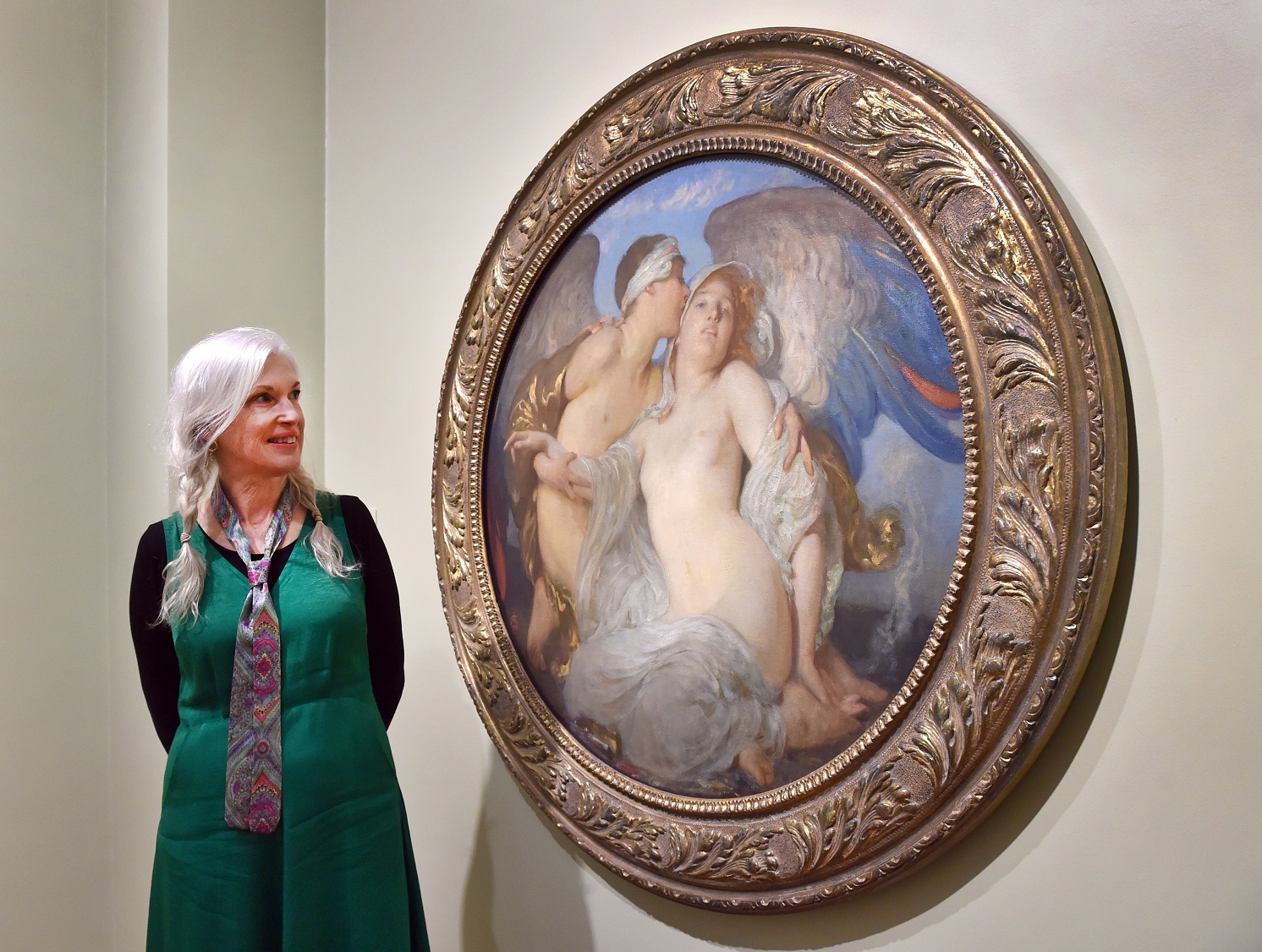
Watching her mother dress up and create still stage scenes for Country Women’s Institute tableau competitions has stuck with Waitati artist Anita DeSoto since she was a child.
"Those scenes somehow impacted on my child’s brain. I’ve always loved that kind of narrative, of being held in that moment which I see in historical painting. It is contrived narrative and it has always held my attention."
At the same time a preschool DeSoto loved nothing more than having a paintbrush in hand.
"One of my earliest memories is of painting caravans at kindergarten — it’s always felt like my happy zone with paint."
So it is not surprising DeSoto grew up to have a love of art history and of tableau painting, which she is investigating as part of her latest series of work "I Don’t Want Your Golden Apple".
She has returned to historical paintings, this time old masters works (created before 1800), such as those of Titian, Rubens and Tiepolo, seeing how the paintings used female characters as accessories, victims, pawns to be bribed and seduced, and defined by patriarchal society.
Once she finds the old master that she wants to reappropriate she keeps to the same myth or scene depicted.
"Most of the myths portray female characters in an undermining way. So I felt if I responded to these paintings, changing the story by either wiping the men out of the picture or fading them out or abstracting them in the composition, it completely changed the story and it became a story about sisterhood.
"I feel very strong in these political times the sisterhood is even more important than ever — that’s what feeds me at the moment. With every reappropriation made, I marvel at the skill of the Old Master and with every broad deleting brush stroke I feel empowered."
Being in New Zealand gives her the distance from the European home of the Old Masters to reappropriate the works.
"I appreciate the technique and work of the Old Masters but the patriarchy that goes along with that makes me really angry.
"They are men of their time and they made beautiful works of art. I really want to respond to that so I can enjoy them without seeing the misogyny they perpetrated."
DeSoto feels women are losing the ground her predecessors fought so hard for when it comes to equality for women.
"It really alarms me."

"When I went to art school political ideas around feminism were new to me. So it’s been a long process of educating myself."
In her own life she has seen how social systems have disempowered her and where she has needed to step up for herself.
"I’m older and wiser now. The art industry is slowly waking up to the fact male artists have had the advantage, how female artists have to work harder than men, like in most industries."
In creating the new works she has really enjoyed letting the paint be paint.
"So they’re not slick, highly technical versions of the past. They’re very loosely painted and very much about the lush colour. They’re very fluid and expressionist."
She looks very closely at the colour palette of the old masters and has stuck with those combinations.
"I like the way when you paint really loosely and the colours merge to create others, that would not occur so much had it been a technically slick application."
The paintings are created in two steps. In the first, she reappropriates the painting "kind of crudely" and allows it to dry. For the second step she repaints the entire painting fairly much in one sitting.
"I paint with broad brushstrokes, dripping, smudging and blurring — disrupting the realism and the old story. Then I wipe paint off or let some of the underlayer come back through. I feel like there is a push and pull between the under painting and the top painting. I try to do that while it’s still wet."
DeSoto has found that process works well for her but also requires her to find a day with no interruptions to finish it.
"I like to draw well and I like that close representation. At the same time I feel the work says a lot more when you mess it all up. I need that security of the under painting. That it’s there and I can return to it."
These days DeSoto works from a small studio at home — the first in her 20-plus years as an artist. It has meant she is able to produce more, the comforts of home are not far away and she can have everything in one place.
"I’ve counted up 25 different studios — now I finally have one at home thanks to my wonderful partner."
DeSoto has always been a painter, although she enjoys advertising work and photography.

Paintings can take a very long time as the artist is often working on them in their mind even when they are not applying paint, she says.
"I spend a lot of time looking through old paintings to find the ones I want to reinterpret, scour through old art books and look online."
She is almost always drawn to outside scenes, with animals and flowers alongside the figures. Her work has always between figurative as she loves drawing figures and loves narrative. It is a skill she has practised for decades, including in her teaching of life drawing.
"It’s important to me have figurative works because of the narrative — that interests me. I find shadow and light fascinating, which is another reason I love historical paintings — their masterful use of light and shadow."
In her previous work she used colonial era photographs, reinterpreting them. DeSoto focused on the anonymity of the women in them and gave them a second life.
"I was very interested in female characters, which only had their husbands’ names and were not recognised in history for all they contributed in serving their families and communities."
She decided to shift away from that towards the old masters for "various reasons".
"I just felt like I’d come to the end of that exploration and I’ve always loved historical painting. Some of my earlier work was a response to that."
The other significant part of DeSoto’s career has been teaching. She has been a part-time lecturer in drawing and painting for nearly 20 years at the Dunedin School of Art, a job she got after studying there herself.
"I’ve never stopped learning about art. It’s a creative environment. Working with other people who are so invested in art is a real gift."
Next up DeSoto is planning to look at the work of Flemish baroque painter Jacques Jordaens (1593-1698).
"I’ve been inspired to respond to his work and female autonomy over their own bodies."
To see:
Anita DeSoto: "I Don’t Want Your Golden Apple", Gallery DeNovo, August 26-September 8.












